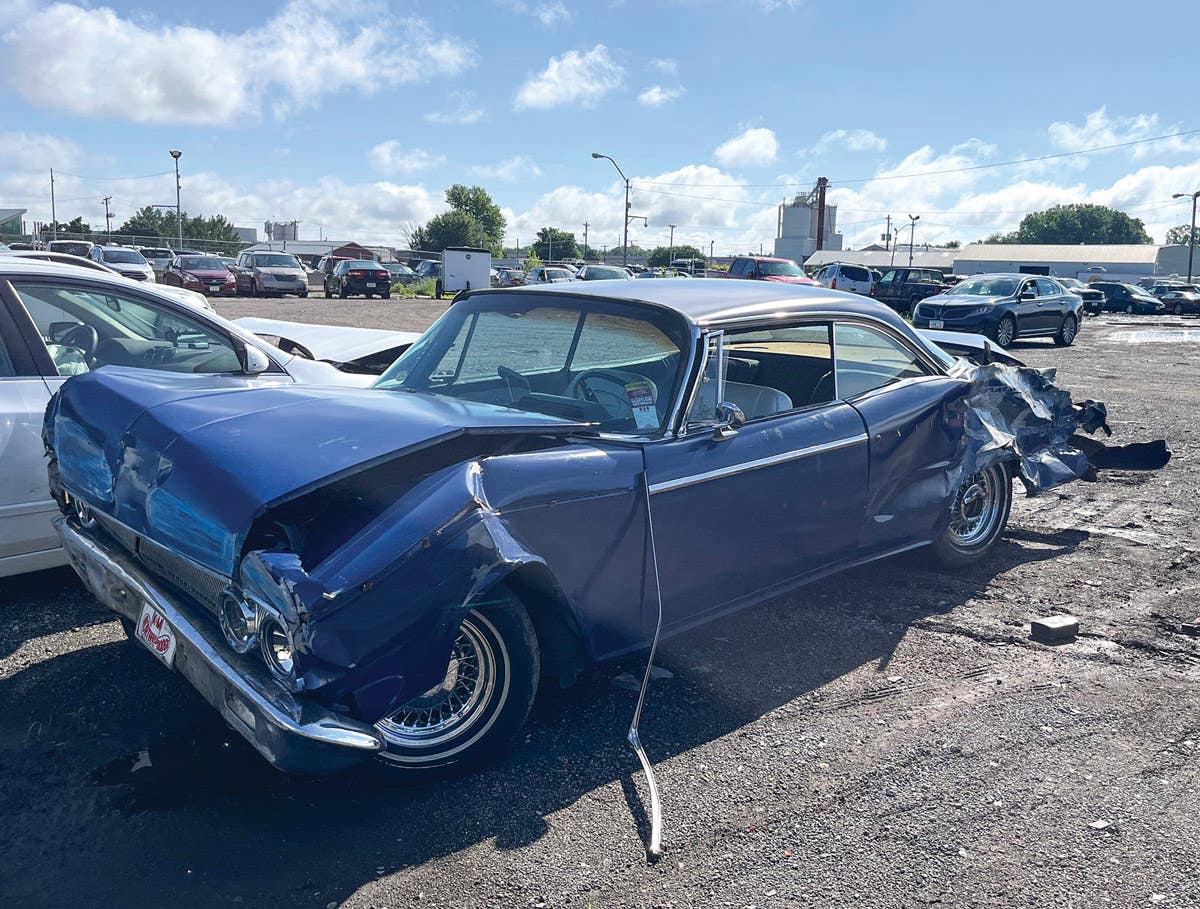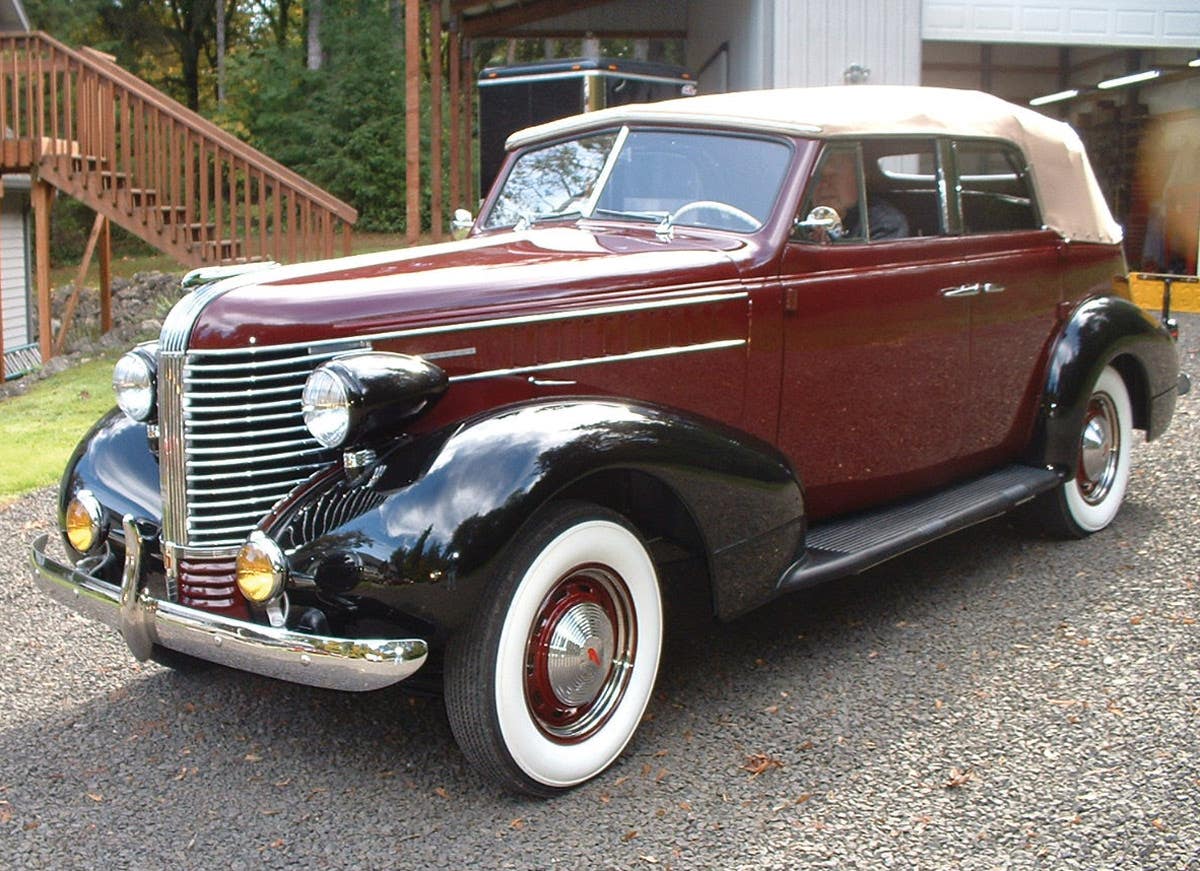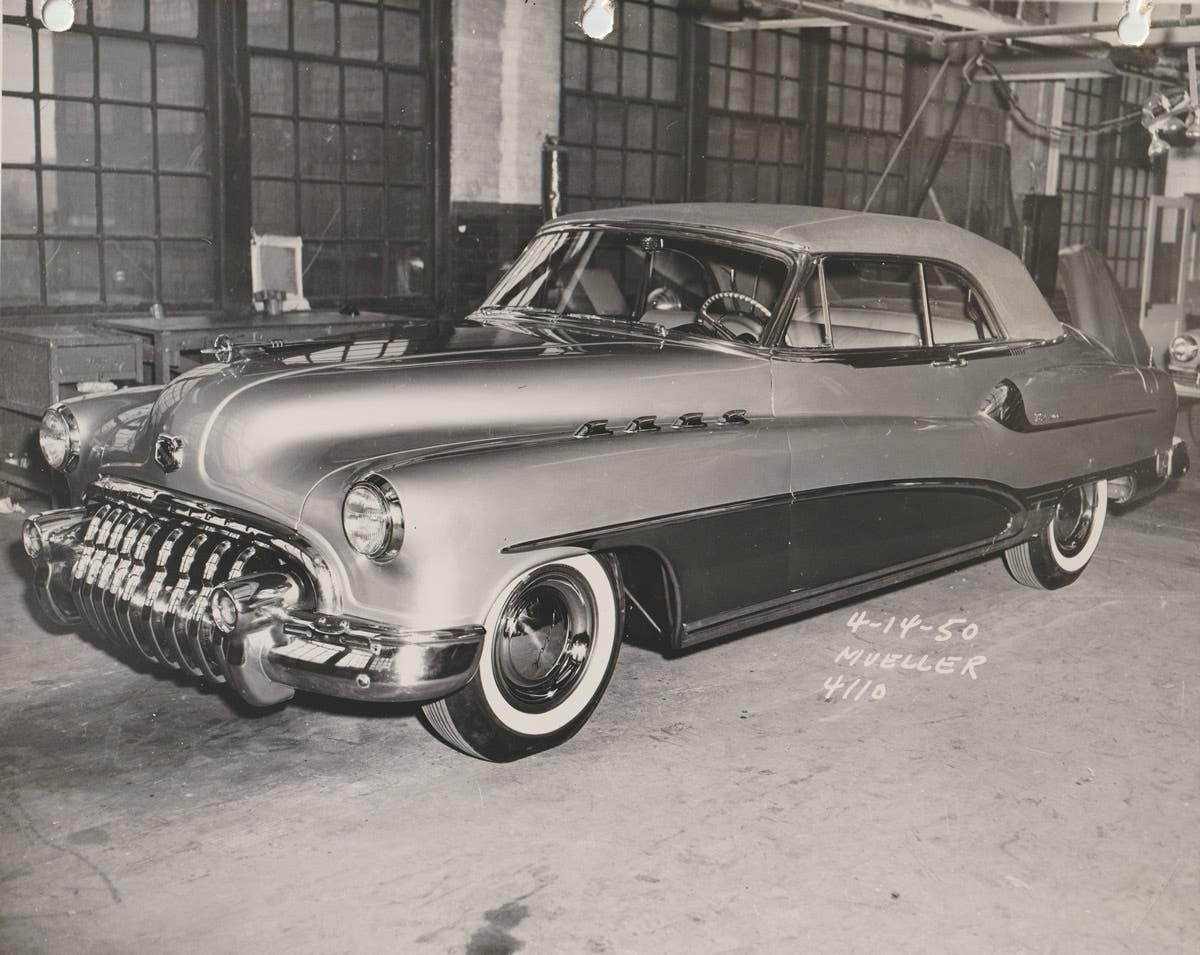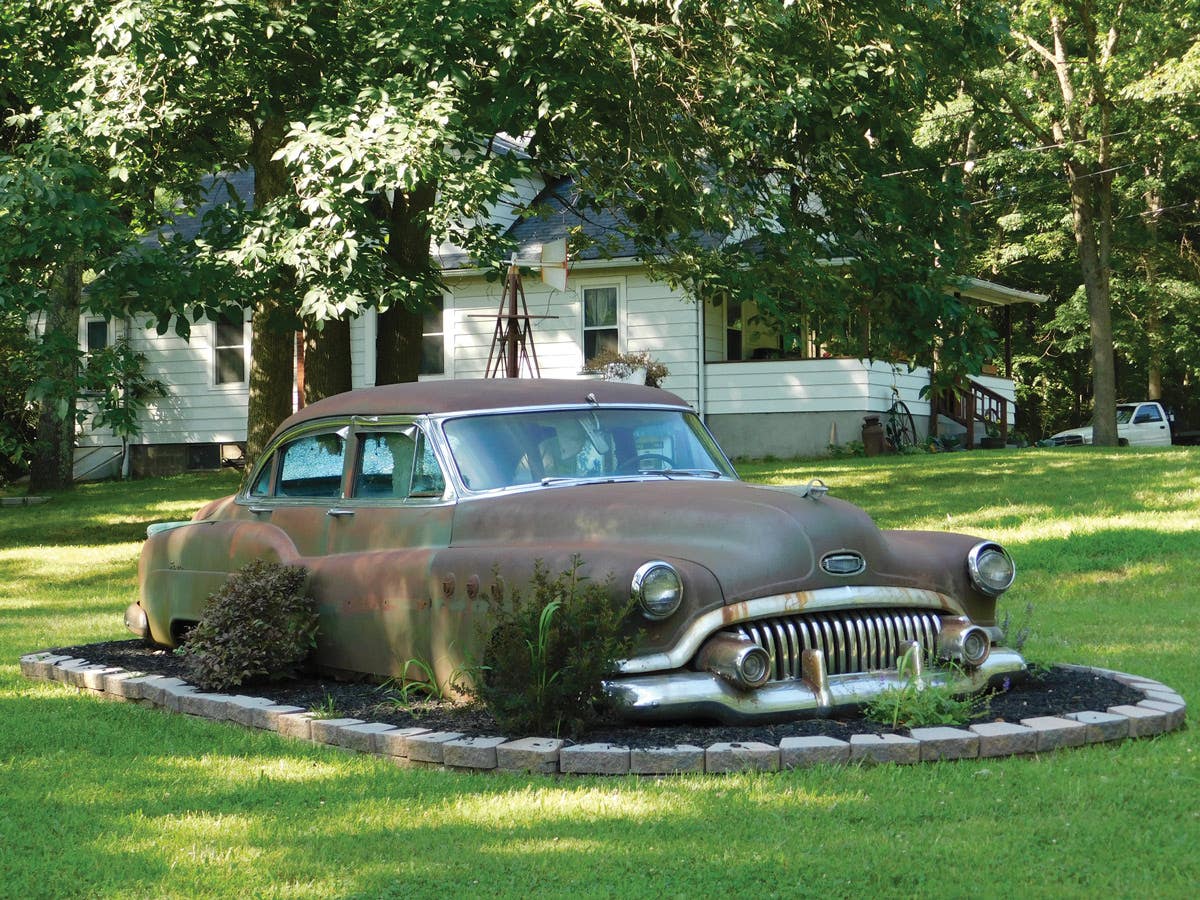Car of the Week: 1965 Chevrolet Corvette
Two years removed from its major restyling for 1963, the second-generation Corvette reached its midway point in 1965 with a model that was cleaned up slightly in the exterior styling department and debuted a few big performance improvements.
Story and photos by Brian Earnest
Ask 10 Corvette lovers what their favorite Corvette year was and you’re liable to get 10 different answers. For Ken Scheidt, the magic year was 1965.
“I like the ’64 through ’67s, and I really like the ’65s because that’s the year I graduated from high school and I remember it being in the magazines and everything. I like the disc brakes and the side pipes, which was an option in ’65," Scheidt says.
“I come from a Chevy family. My dad always had Chevys, and when Corvettes first came on the market I was a young, impressionable guy. I liked them then and I still like Chevys. And I’ve always really been attracted to this body style. Ever since they came out in ’63, I’ve always loved the way these cars looked.”
Scheidt, a resident of tiny Custer, Wis., had gone through several Corvettes by the time he bought his 1965 back in 1978. At that point, he viewed the car as a bit of a well-used “fixer-upper” and had no great plans for it other than to keep it running and enjoy driving it. The odometer had spun 105,000 miles in the Corvette in the car’s first 13 years, and Scheidt had visions of adding quite a few more.
“It was a 20-footer then. From 20 feet away, the car looked really good. When you got close to it, it was cracked in a lot of places, and something had to be done… When I got it, it was pretty tired, so the first thing I had to do was rebuild the engine. And after that I just kind of chipped away at it through the years and did little things to it, until 2005.”
That was when the white coupe got a big present for its 40th birthday — a complete remake from nose to tail. Scheidt hadn’t planned on any major restoration, but that all changed when he spotted some other 1960s Corvettes undergoing major renovations at Corvette Sports, a Corvette specialty shop in Sheboygan Falls, Wis. “It was just going to be a driver, I never expected [to restore it]. And every year that went by, those restorations got more and more expensive, and they sort of intimidated me,” Scheidt said.
“I finally took it over there [to Corvette Sports] and there were a couple of them in there that they were doing from the ground up. When I saw that I thought, ‘I’m not going to piecemeal this car. I’ve gotta do it right.’ It’s just too much a part of my life to just do a halfway job, even though it was more money than I wanted to spend.”
One the major steps of the remake would be restoring the coupe to its original Rally Red color. The car had been repainted white during the 1970s, but Scheidt wanted it returned to its original combination of red with a black interior. The Corvette was one of 3,688 examples painted Rally Red for the 1965 model year, when Chevrolet built a total of 23,564 Corvettes, including 8,187 fastback coupes, starting at a base price of $2,947.
Two years removed from its major restyling for 1963, the second-generation 'Vette reached its midway point in 1965 with a model that was cleaned up slightly in the exterior styling department and debuted a few big performance improvements. Chief among them were four-wheel disc brakes, and the mid-year introduction of the big-block 396-cid engine option. A new hood without indentations was standard, but cars with a new big-block used a special hood with a funnel-shaped “power blister” air scoop. Interior updates included instruments that were changed to a flat-dial, straight-needle design with an aircraft-type influence. The seats had improved support and one-piece molded inside door panels were introduced. Standard equipment included: tachometer; safety belts; heater and defroster; windshield washer; outside rearview mirror; dual exhaust; electric clock; carpeting; manually-operated top (convertible) and sun visors.
The four-wheel disc-brakes were standard, although drum brakes could be substituted for a $64.50 credit. Fuel injection was phased out at the end of the 1965 model year. A new tough-looking side exhaust set-up and telescoping steering wheel were among the coolest options on the menu.
The base engine was a 250-hp version of the 327-cid V-8. From there, buyers could go up the ladder for the 300-hp 327 (RPO L75), 350-hp 327 (RPO L79), 365-hp 327 (RPO L76), 375-hp 327 (RPO L84), or the new 425-hp 396.
A three-speed manual transmission was standard, but almost 90 percent of the 1965 Corvettes rolled out the door with a four-speed.
The new disc brakes and powerhouse engine availability made the 1965 ’Vettes arguably the best yet up to that time, and for guys like Scheidt they remain that way. Road and Track magazine editors at the time were certainly fans of the 1965 model, noting in a review at the time that "in many ways, the Corvette is the original 'build to suit' sports car. There is a complete range of options that make it possible to satisfy almost any driver who might consider buying such a car. It can be had 'mild' with automatic transmission, power steering, power windows or you can have it 'wild' with everything up to and including the fuel-injected 375-bhp engine, heavy duty suspension, cerametallic competition brakes, fast steering, wide-base cast-alloy wheels and the whole biz.”
Scheidt’s coupe is equipped with its original 300-hp/327-cid V-8 and four-speed. Inside are leather seats and a teak wheel, which he added himself. “It does not have power windows, does not have power brakes and does not have power steering,” he notes. “That was something that really attracted me to the car in the early days because that meant it was a real sports car. Now I think sometimes it wouldn’t be too bad to have power steering, but I’m not going to change it!”
Scheidt’s one concession to originality is the hood. He simply liked the looks of the big-block hood better, so he put one on the car. He’s not pining for a 396 under that hood, however. “It’s a manual steering car and a manual brake car. It’s a hard enough car to steer the way it is. You put a big-block in there and they’re really difficult to turn!” he laughed. “I kept the original hood and painted it red also… And I did find out that at the end of the model year in 1965, they ran out of the regular hoods and had some of these so there are cars that came from the factory with the big-block hood and the small-block engine.
“I kept them both, but I like that hood. It’s a ’65 hood, I don’t have a problem with it on.”
The restoration process also included putting in a new, correct rear end because “the old one had a wrong gear in it.” New glass was installed all round. New leather upholstery, carpeting and headliner were added. The existing gauges and dash were all freshened up and made to look new. The side pipes and shields were replaced, and all the shiny bits on the outside were re-chromed and still shine like new, even 10 years later.
Scheidt admits that the whole restoration was a good learning experience — and a painful one at times. There were plenty of unexpected hiccups, and things that he didn’t expect to have to replace or address. “Like the glass,” he pointed out. “I had all the glass in the car, but the windshield had some issues and it was showing its age. So it was like ‘If we’re going to do the glass, we’re going to do all the glass, not just the windshield.’ Well, I wasn’t counting on that. Those are the kind of things that came up, but you don’t do one thing and not do the other.
“The only thing we didn’t have to re-do was the engine, because I had that rebuilt earlier when I first got it,” Scheidt said. “The only thing we left original was the crank. It got new pistons, new rods, new everything. At the time it was smoking and using oil and it was bad. It had to be done.
“The frame was real good on the car. There was a little surface rust, but we didn’t have to cut anything or do much to it. All the suspension was worn out, but the frame just had a little surface rust. We didn’t have to cut out anything or do much to it. I rebuilt all the suspension, all the bushings and everything. We acid-dipped the frame and powder-coated it; put in new interior; new glass. Everything is new.”
The coupe’s odometer now shows about 126,000 miles, and that number is growing very slowly. Scheidt puts more miles on his 2006 Vette and saves the 1965 for special occasions, like the Iola Old Car Show in Iola, Wis., where it was displayed this past July with a group of other impressive ‘Vettes.
“I’m just a afraid to drive it. It’s one of those deals, and I get a lot of heat about it, especially from the guys at Corvette Sports!” Scheidt admits with a laugh. “They’re really mad at me. They think I should drive it a lot more than I do.
“I promise I’m going to drive it more.”
_________
Show us your wheels!
If you’ve got an old car you love, we want to hear about it. Email us at oldcars@aimmedia.com







